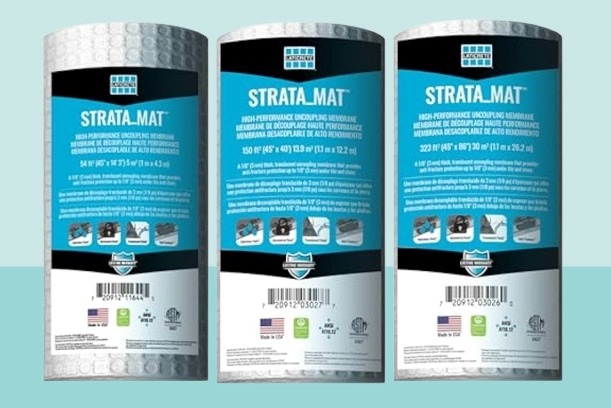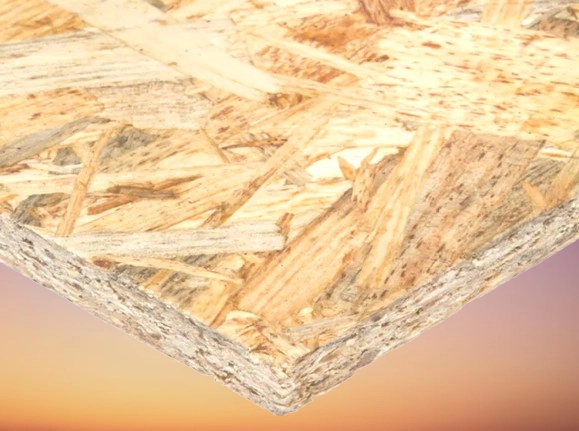Laticrete Strata Mat vs. DITRA

Any tile installation project benefits from the usage of an uncoupling membrane. It produces the perfect surface for tile installation.
Additionally, if properly installed, an uncoupling membrane effectively reduces lateral stress that could be transmitted to the tiles.
On the market, there are numerous uncoupling membranes. Not all of them are made equally. There are those who perform better than others.
Using the best decoupling membranes is essential for any tile installation project. DITRA and Laticrete Strata Mat are two of the most widely used decoupling membranes.
This thorough comparison will help you make an informed decision if you are having trouble deciding between the two.
A Laticrete Strata Mat: What Is It?
Laticrete produces an uncoupling membrane called the Strata Mat. It is intended for use in tile installation jobs on homes and businesses.
An excellent substitute for the bulky and challenging-to-install tile backer boards is the Strata Mat. With adhesive mortar, this thin decoupling mat provides a robust mechanical bond.
The strata helps the mortar underneath dry quickly, and this uncoupling membrane’s ability to work with both modified and unmodified mortars is one of its special features. This makes it possible for installers to select the ideal solution for the tile installation task.
Installing this mat is not that difficult. It can be applied to substrates made of wood or cement. The downtime needed prior to grouting is decreased by the innovative design. And a lot of tile installers value this capability. There are more advantages to using the Strata Mat besides this.
Additionally, it is made to allow the installer to examine the thinset coverage without having to raise the mat. When checking for thinset coverage using Strata Mat, there is no chance of the bond being compromised.
The translucent plastic construction and fabric mesh enable the aforementioned. When placed against the thinset, the mat’s surface will become dark.
As a result, you can quickly determine whether the mat’s bottom has enough thinset. Additionally, the strata mat offers vapor management, which involves removing any moisture that may have come from the concrete slab.
These mats are a far better option than standard backer boards because of their lightweight nature. A 323 square foot roll of strata mat weights less than forty-five pounds.
This implies that installing this mat on your surface won’t require additional assistance. In addition to being lightweight, this mat is simple to cut with a utility knife.
Additionally, they don’t create a lot of dust during cutting, unlike backing boards. Additionally, the mat can be installed on a surface without the use of screws or nails.
We need to discuss the fracture isolation function as we conclude our discussion of Laticrete Strata Mat. Any movement along the substrate could cause tiles to become vulnerable.
All of these movements will be absorbed by this mat, preventing any from reaching the tile surface and cracking it. Your tiles will endure for a very long time with such a membrane underneath.
DITRA: What is it?
Most likely, you’ve heard of Schluter. They are a well-known producer of building supplies, and the DITRA uncoupling membrane is among their greatest innovations.
The bottom of the polythene membrane is covered in laminated fleece. DITRA has a grid structure on top and looks like a giant waffle.
DITRA is among the best uncoupling membranes available, much like the Strata Mat. These are the explanations.
To begin with, DITRA provides unparalleled decoupling. It prevents cracking by absorbing the movement of the flooring substrate when placed between tiles.
Second, the substrate is waterproofed with DITRA. In addition to being aesthetically pleasing, tiles are a great choice for high-humidity spaces like showers. Tiles don’t have a waterproof surface, though.
It is easy for moisture to leak through, harm the substrate, or encourage the formation of mold. DITRA waterproofs the substrate, in contrast to the majority of uncoupling membranes. It is therefore the ideal choice for tiles placed in high-moisture spaces like kitchens and showers.
The design of DITRA mats is distinctive. The vapor may be neutralized more easily thanks to the air channels underneath the mat. These channels allow moisture from the substrate to evaporate efficiently and are always open.
A DITRA mat transfers the load placed on the tiles straight to the substrate, as if that weren’t enough. This indicates that tiles placed on top of a DITRA mat are capable of withstanding increased load pressure. This mat has excellent adherence. As a result, it can be applied to walls and floors.
Ditra’s exceptional qualities make it a great uncoupling membrane for concrete, gypsum, and underfloor heating surfaces.
Make sure the surface on which a DITRA decoupling membrane is put is level if you decide to use one. DITRA cannot be placed over until the substrate is completely dry.
For compatibility reasons, make sure you use a strong adhesive during installation, ideally Schluter’s. After DITRA is deployed, tiling can be completed nearly instantly.
In What Ways Do They Differ?
- The mechanical bond of Strata Mat is far stronger than DITRA’s.
Strata Mat is the better option if you want a more robust bond between the tiles and the substrate. The purpose of this uncoupling membrane is to establish a mechanical connection.
It is not that the tiles will not adhere to DITRA. Simply said, Strata Mat will adhere to your tiles more securely. Try Strata Mat if you have experienced poor adherence in past tiling projects.
- The substrate is waterproofed with DITRA.
DITRA is the ideal uncoupling membrane to use for tiles that are going to be installed in a high-humidity location, like a kitchen or bathroom. Compared to DITRA, Strata Mat might adhere to tiles considerably more firmly.
It isn’t a waterproof membrane, though. As a result, there are restrictions on the locations where Strata Mat is permitted. Because DITRA has waterproofing characteristics, you can use it anywhere.
- DITRA Is Able to Support Higher Loads
When DITRA is applied to a surface, the cutback cavities develop mortar structures. The load transfer between the tiles and the substrate is facilitated by these structures.
As a result, the substrate receives an even distribution of the enormous stress applied to the tiles. DITRA is guaranteed to be able to support more loads than Strata Mat thanks to this design.
- Compared to DITRA, Strata Mat is more translucent.
Strata Mat is more translucent when compared to these two choices. This function is useful for verifying that the thinset beneath the mat is covered.
You can verify the amount of thinset without constantly pulling up the mat when using a translucent mat like Strata.
What Similarities Do They Have?
both;
- Proud of Outstanding Uncoupling Skills
DITRA and Strata work well for separating the tiles from the substrate. With either, you don’t have to be concerned about the substrate’s movements as long as you install them properly. You can also be sure that the tiles won’t break.
- Provide Vapor Control
Air passages allow moisture from the substrate to be removed more easily from both mats. Mold growth may result from the retained moisture if this characteristic is not present. The integration of vapor management elements by Laticrete and Schluter was excellent.
- Simple to Install and Handle
Whichever mat you choose—Strata or DITRA—both are thin and simple to cut through. As a result, installation is really simple. These two don’t require additional assistance to install.
- Outperform tile backer boards.
These two uncoupling membranes are lightweight and incredibly simple to install, in contrast to hefty and challenging backer boards. Uncoupling membranes like DITRA and Strata are preferred by many over tile backer boards.
What Makes Laticrete Strata Mat Better?
Due to its numerous advantages, Laticrete’s Strata mat is a popular among do-it-yourselfers. It’s easy to cut and reasonably light.
But the main characteristic that sets the Strata apart from the competitors is the solid mechanical bond it forms with tiles.
DITRA is more opaque than Strata. As a result, you can more easily verify the thickness without having to raise the mat.
What Makes DITRA Better?
Both DITRA and Laticrete Strata Mat have advantages. First, DITRA has the ability to be waterproof. Making the distinction between vapor management and waterproofing is essential.
The latter describes how moisture escapes through an uncoupling membrane. But when the tiles are exposed to water, a waterproof mat like DITRA will keep the water from getting through.
A DITRA mat is also capable of supporting a greater weight capacity than a strata mat. Because of this, it’s a good choice for tile installation in places with lots of traffic.
Why Should Someone Get a Strata Mat?
For interior applications, strata mat is the perfect uncoupling membrane, particularly in places that won’t get much moisture. Because strata mats adhere well to tiles and are less opaque, making installation easier, do-it-yourselfers should use them.
Why and Who Should Receive DITRA?
Conversely, DITRA can bear large loads and is waterproof, making it appropriate for outdoor applications. Both skilled builders and do-it-yourselfers can use it.

